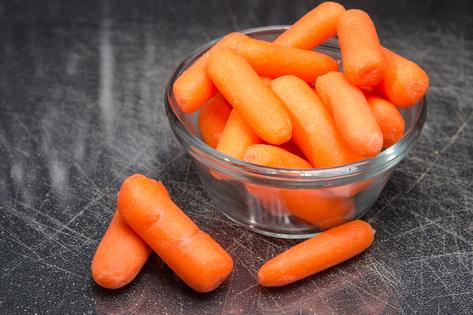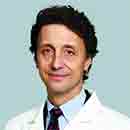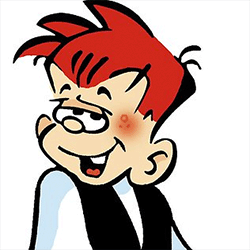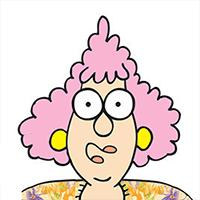Are baby carrots healthy? And what are they, anyway?
Published in Health & Fitness
Whether you remember eating them as a kid, give them to your own children, or just buy them as an already prepped dipper for hummus, chances are you have some experience with those stubby-ended, cylinder-shaped baby carrots.
The phrase “baby carrots” is a bit of a misnomer. True baby carrots are just small carrots. If you’ve ever had a garden and pulled a carrot out before it was fully mature, that would be a baby carrot. What we’re talking about here are “baby-cut carrots,” but since everyone calls them baby carrots, that’s what we’ll do too.
How are baby carrots made?
Most baby carrots start off as full-sized carrots, says registered dietitian Marina Chapparo. “They’re simply cut, washed, peeled, and shaped into smaller, rounded pieces for convenience.” The waste from the shaping process is typically used for other carrot cuts (such as shreds) or animal feed.
After shaping, the carrots are packed in plastic bags with a little water, says Karen White, vice president of marketing at Bolthouse Fresh Foods, a grower and distributor of fresh carrots based in Bakersfield, California. “After harvest, carrots naturally release moisture, and we add a small amount of water to help maintain their hydration and appearance during storage and transport.” This helps keep the carrots crisp and fresh.
Are baby carrots healthy?
In a word, yes. For the most part, they have the same nutritional profile as regular carrots. A serving delivers over 100% of the daily vitamin A requirements, plus some vitamin C, potassium, and fiber. “There might be a slight difference in fiber since the outer peel is removed — for example, a large raw carrot has about 3.1 grams of fiber versus 2.7 grams in baby carrots,” says Chapparo. But if you peel your large carrots, then the fiber amount is comparable. “What matters most for your overall health is consuming more fruits and veggies, be they fresh, dried, frozen, or pre-cut and washed,” she says. So don’t sweat the tiny fiber difference.
Are baby carrots safe to eat?
One of those Internet myths floating around is that baby carrots are soaked in bleach, and that’s totally false. Like many pre-cut vegetables, they are rinsed (but not soaked; that’s another myth) in a diluted chlorine solution. “The chlorine is at levels comparable to tap water,” Chapparo says.
Cassidi Amos, vice president of quality assurance and food safety at Bolthouse Fresh Foods, explains. “As part of our food safety program, we use a chlorine-based sanitizing rinse in our wash water to help eliminate harmful bacteria and ensure our carrots are safe and ready to enjoy fresh from the bag.” This is an industry-standard practice, and makes baby carrots more — not less — safe to eat.
And what about when baby carrots get a dry, white-ish appearance? That’s known as “white blush,” and it's a result of dehydration, says Amos. “Since the outer skin is removed during processing, the exposed surface is more susceptible to drying out. This is a natural and harmless occurrence — comparable to how sliced apples may brown when exposed to air — and does not affect safety.” You can easily restore the carrots’ orange-y appearance by simply rinsing them with water.
(Real Simple magazine provides smart, realistic solutions to everyday challenges. Online at www.realsimple.com.)
©2025 Dotdash Meredith. All rights reserved. Used with permission. Distributed by Tribune Content Agency, LLC.










Comments